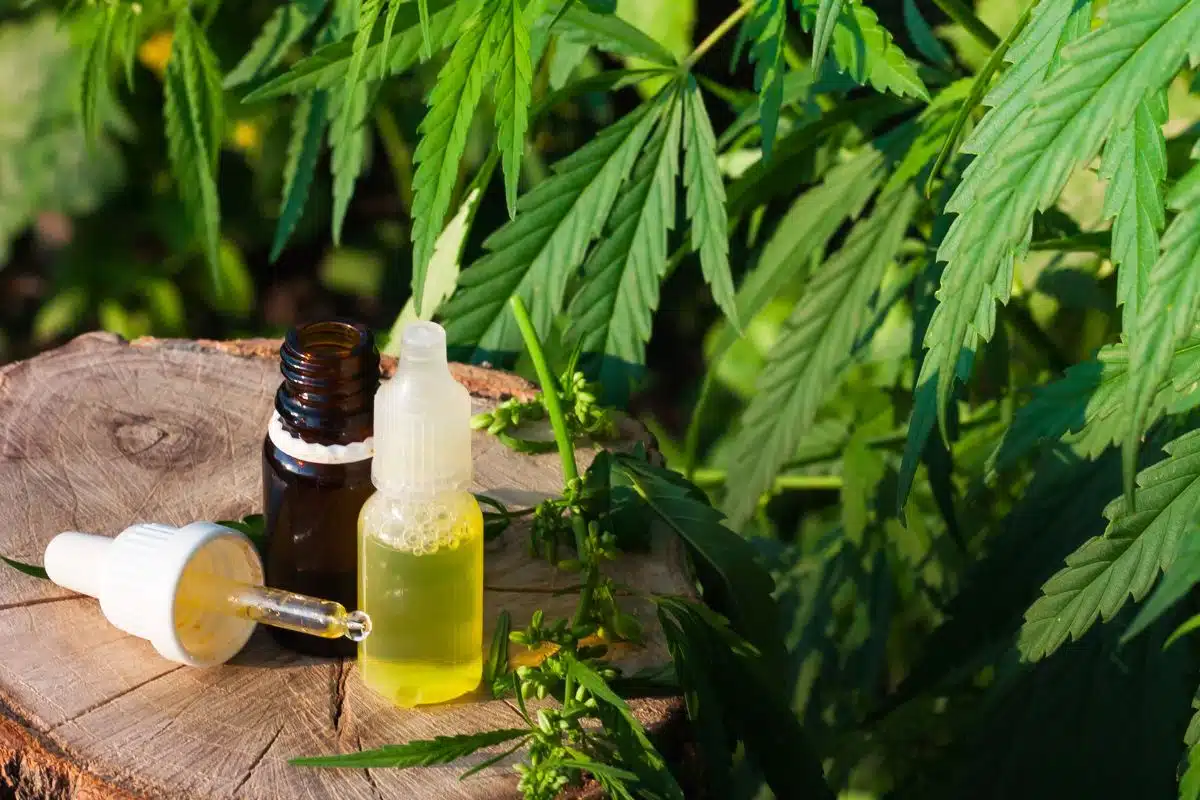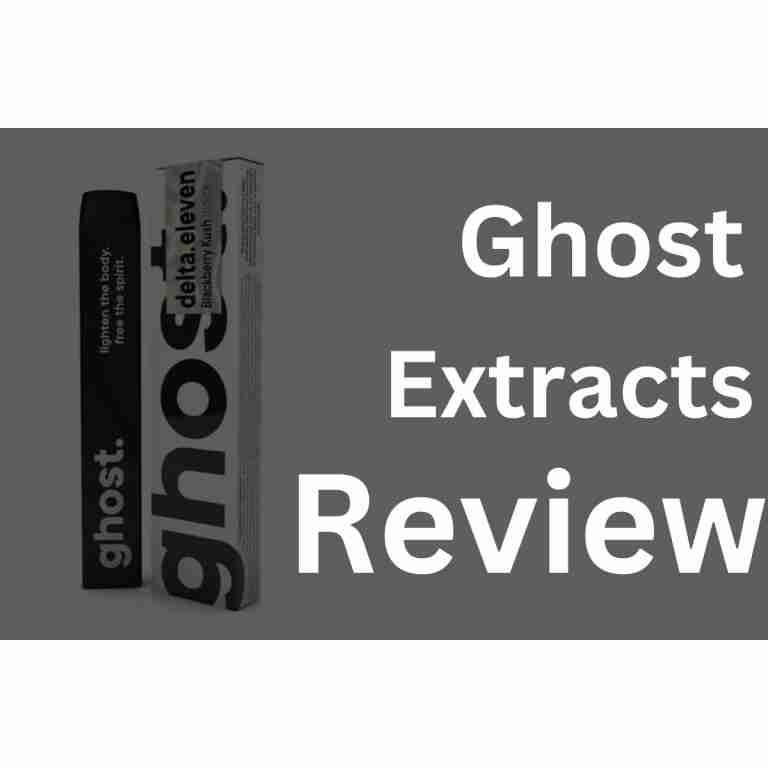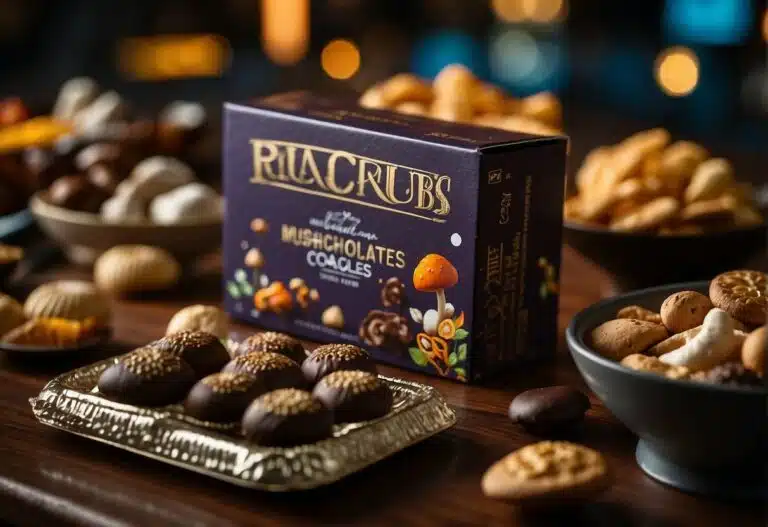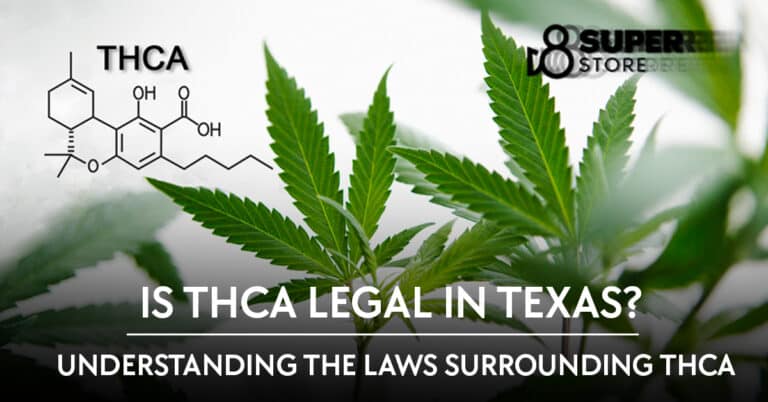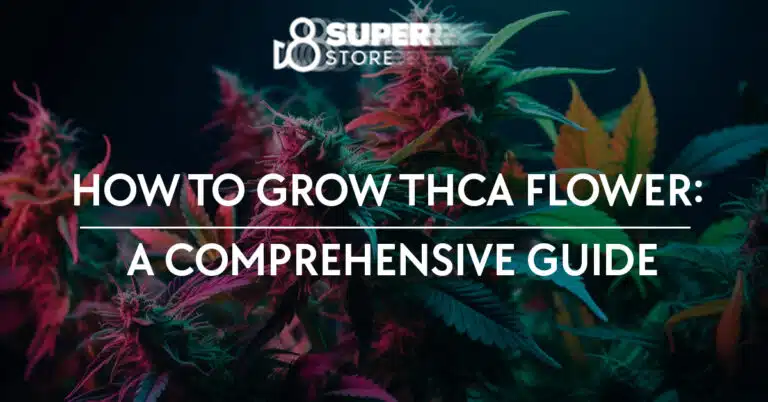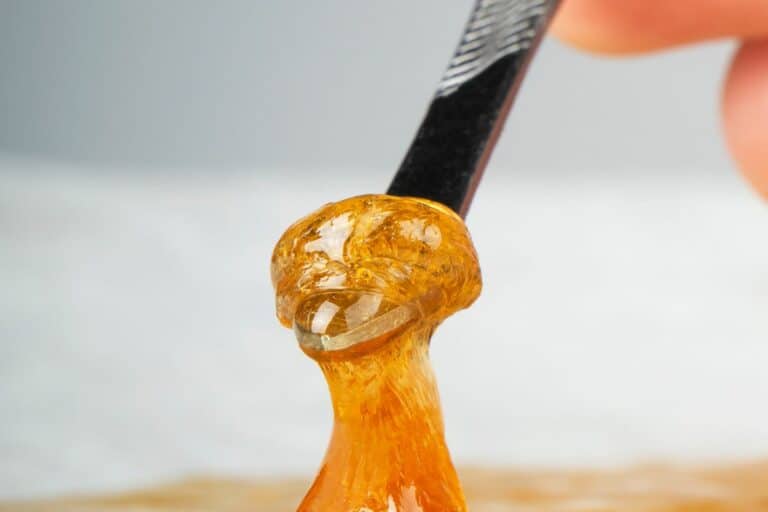Does CBD Contain THCa? Understanding Cannabinoid Profiles
CBD and THCa both hail from the same botanical family, yet they dance to entirely different beats. Think of CBD as that cool friend who keeps the stress at bay without messing with your mind. Envision it as the cape-wearing hero of the hemp world, brimming with positivity and virtually none of the THC that sends you into orbit. Craving a calm vibe and keen on discovering your zen? You’ve hit the jackpot. Stick around, and you might just find the secret to feeling fantastic without the fog.
Table of contents
- Understanding Cannabis Compounds
- Does CBD Contain THCa?
- Decarboxylation Process: Transforming THCa to THC
- Health Benefits and Effects of CBD and THCa
- Interaction with the Endocannabinoid System
- Legal Context and Accessibility
- Consumption Methods and Products
- The Entourage Effect and Product Potency
- Potential Side Effects and Precautions
THCa, on the other hand, is the non-psychoactive precursor to THC, found in raw and live cannabis. As the plant dries, THCa slowly converts to THC through the process of decarboxylation, which can also be accelerated by applying heat. However, CBD products are not intended to contain THCa. When CBD oil or hemp oil products are manufactured, they undergo processes that typically eliminate or significantly reduce the presence of THCa. Analysis of Cannabidiol, Δ 9 -Tetrahydrocannabinol, and Their Acids in CBD Oil/Hemp Oil Products emphasizes that decarboxylation is vital to ensure the presence of active CBD, and that reputable products aim for negligible amounts of THCa.
While different methods of extraction and product formulation can influence the compound profile of a CBD product, your CBD oil or hemp oil should primarily contain CBD and only trace amounts, if any, of THCa. It may also contain other cannabinoids like cannabigerol (CBG) or cannabinol (CBN), which may contribute to the entourage effect, enhancing the overall potential benefits of the product. The presence of THCa in a CBD product could indicate improper processing or contamination, which should be minimal in quality-controlled processes as detailed in studies such as the intervention abilities of cannabinoid compounds. Always verify third-party lab test results to ensure the cannabinoid content of your CBD products.
Understanding Cannabis Compounds
In the complex matrix of the cannabis plant, a variety of compounds play distinct roles. As you explore these, remember that cannabinoids like CBD and THC are different in both structure and effect, and that hemp is often the go-to source for CBD extraction.
Cannabinoids and Their Roles
Cannabinoids are the active chemical compounds found naturally in the trichomes of the cannabis plant. The two most recognized cannabinoids are cannabidiol (CBD) and tetrahydrocannabinol (THC). Each cannabinoid interacts with your body’s endocannabinoid system but produces different effects. CBD is known for its non-intoxicating effects and potential therapeutic benefits, while THC is the compound primarily responsible for the psychoactive effects associated with marijuana.
CBD vs THC: Chemical Structure and Effects
The chemical structures of CBD and THC are similar, yet they have a critical difference that influences how they interact with your body. Both cannabinoids have the same molecular formula, but their atoms are arranged differently, resulting in distinct properties. CBD does not produce psychoactive effects but is lauded for its potential to alleviate symptoms of anxiety, pain, and inflammation. THC, in contrast, binds with receptors in the brain to generate a sense of euphoria or “high.”
The Hemp Plant: Source of CBD
Hemp, a variety of the Cannabis sativa plant species, is specifically cultivated for its rich CBD content and minimal THC levels. By legal definition, hemp plants contain no more than 0.3% THC. This natural source of CBD is frequently used to create oils, tinctures, and topicals. Hemp is also rich in other compounds such as terpenes and flavonoids that may enhance the therapeutic effects of CBD through a phenomenon known as the entourage effect.
Does CBD Contain THCa?
When exploring the compounds within Cannabis sativa, you may wonder if cannabidiol (CBD), a non-psychoactive component, contains tetrahydrocannabinolic acid (THCa). To clarify, CBD and THCa are distinct cannabinoids with different properties and effects on your body.
THCa is the non-psychoactive precursor to tetrahydrocannabinol (THC), the psychoactive component of cannabis. It is important to note that THCa converts to THC through a process called decarboxylation, which occurs when cannabis is exposed to heat or UV light.
CBD, on the other hand, is another major cannabinoid found in cannabis that has gained popularity for its potential therapeutic benefits, without causing psychoactive effects. Unlike THCa, CBD is not a precursor to any psychoactive compounds and it exists independently in the plant.
Here is a brief overview of their differences:
- CBD:
- Non-psychoactive
- Does not convert into a psychoactive substance
- THCa:
- Non-psychoactive precursor
- Converts to psychoactive THC upon decarboxylation
In conclusion, CBD does not contain THCa. They are individual compounds within the cannabis plant. For more detailed information regarding the relationship between these cannabinoids, research suggests examining the structure-function relationship of THCa and CBDA synthase to better understand how these compounds are biosynthetically derived within the plant.
Decarboxylation Process: Transforming THCa to THC
| Step | Process | Description |
|---|---|---|
| 1 | Harvesting | Cannabis plants are harvested, and the plant material containing THCa is collected. |
| 2 | Drying | The harvested cannabis is dried to remove excess moisture. |
| 3 | Grinding | The dried cannabis material is ground into a fine powder or consistency. |
| 4 | Decarboxylation | THCa undergoes decarboxylation through heating. This can be achieved by baking, smoking, or other methods. The process removes the carboxyl group (COOH) from THCa, turning it into THC. |
| 5 | Activation Temperature | Decarboxylation typically occurs at temperatures around 220-245°F (105-118°C). |
| 6 | Time | The duration of exposure to heat is crucial. Usually, it takes around 30 minutes to a few hours for decarboxylation to complete. |
| 7 | Cooling | After decarboxylation, the material is allowed to cool before further processing. |
| 8 | Storage or Consumption | The now-activated THC can be stored for later use or incorporated into various cannabis products for consumption. |
Decarboxylation is the chemical process that converts tetrahydrocannabinolic acid (THCa) into psychoactive tetrahydrocannabinol (THC). As you heat cannabis, a carboxyl group (COOH) is released from the THCa molecule as carbon dioxide and water vapor, leaving THC in its place.
Understanding Decarboxylation:
- Temperature: Key to initiating decarboxylation. Too low, and the conversion is incomplete; too high, and you risk degrading valuable cannabinoids.
- Methods: Common methods include smoking, vaping, and dabbing. These heat practices can efficiently decarboxylate THCa to THC.
When you smoke cannabis, the heat from the flame causes almost instant decarboxylation. Similarly, vaping uses controlled temperatures to convert THCa to THC just before inhalation. Dabbing, although a newer consumption method, also administers intense heat to the cannabis concentrates to trigger decarboxylation.
Why It Matters:
- THCa is not psychoactive; only after decarboxylation does THC become available and produce the “high” associated with cannabis.
- The efficiency of decarboxylation affects potency. Incomplete decarboxylation means lower levels of THC and less psychoactive effect.
Be aware that decarboxylation is not only relevant when consuming cannabis. It’s also a critical step in the preparation of cannabis-infused edibles and tinctures, where the process must occur before the infusion to ensure the expected potency of the final product.

Health Benefits and Effects of CBD and THCa
In exploring the health benefits of CBD and THCa, it’s essential to understand that while both are compounds found in cannabis, they serve different purposes and exhibit various effects. Their properties range from anti-inflammatory to neuroprotective, and they address issues from chronic pain to epilepsy, with both having unique therapeutic applications.
Potential Medical Applications of CBD
Cannabidiol (CBD) is renowned for its multiple health benefits without causing a psychoactive effect. Research suggests that CBD can help alleviate chronic pain by interacting with neurotransmitters and reducing inflammation. It’s also shown promise in treating conditions like anxiety and depression, and aiding with sleep disorders. One of the most significant breakthroughs has been in the field of epilepsy—seizures can be dramatically reduced with CBD use. For those undergoing chemotherapy, CBD may decrease symptoms like nausea and vomiting, improving your quality of life during treatment.
Therapeutic Properties of THCa
While less known, tetrahydrocannabinolic acid (THCa) is a non-psychoactive precursor to THC found in raw and live cannabis. As it doesn’t produce a high, THCa is primarily of interest for its potential therapeutic properties. Early studies indicate that THCa may have an anti-inflammatory effect, which could be beneficial for conditions such as arthritis. Moreover, it might possess neuroprotective qualities, which could contribute to brain health and combating neurodegenerative diseases.
Comparing Effects: CBD and THCa
CBD and THCa both contribute to the health benefits of cannabis but their effects and applications differ. CBD is extensively studied and is proven to help manage anxiety, inflammation, pain, and chronic pain, with a strong emphasis on its anti-inflammatory and neuroprotective effects. THCa, on the other hand, shows great promise as an anti-inflammatory and neuroprotectant, which might make it suitable for treating inflammation and protecting brain health. However, its use is less well-documented compared to CBD, and more research is needed to fully understand its capabilities and potential benefits. Remember that while you may seek to benefit from these compounds, it’s critical to review scientific research and consult healthcare professionals regarding their use for your specific health conditions.
Interaction with the Endocannabinoid System
Your body is equipped with a complex network known as the Endocannabinoid System (ECS), which includes a series of receptors that interact with compounds called cannabinoids. Cannabinol (CBN), CBD, and THCa are important phytocannabinoids that modulate this system, specifically impacting the ECS receptors.
How CBD and THCa Affect ECS Receptors
CBD and THCa, as phytocannabinoids, are recognized by your body’s ECS receptors, CB1 and CB2. The relationship between these compounds and the ECS receptors is nuanced:
- CB1 Receptors: Found primarily in the brain, these receptors influence functions like mood, appetite, and memory. CBD does not directly bind to CB1 receptors, but it does influence them indirectly, modulating receptor activity and contributing to its therapeutic effects.
- CB2 Receptors: These receptors are more common in the immune system, affecting inflammation and pain. CBD has a more direct interaction with CB2 receptors, which may be why it holds anti-inflammatory properties.
It’s important to note that while CBD is non-psychoactive and does not produce “high” effects, its interaction with the ECS can have a significant impact on your well-being. On the other hand, THCa, the acidic precursor to THC, has its own unique interactions. Prior to decarboxylation, which converts THCa to THC, THCa’s binding affinity for CB1 and CB2 receptors is comparatively weak. However, it still displays anti-inflammatory properties through its interaction with the ECS, without causing intoxication.
Remember, the balance and influence of each cannabinoid on the ECS can vary, and your body’s response may be influenced by your unique biology and the specifics of cannabinoid-receptor interactions.

Legal Context and Accessibility
Your understanding of CBD and THC’s legal landscape is pivotal for accessibility and compliance with the law. Here’s what you need to know about their legal context.
Hemp-Derived CBD Legality
Hemp-derived CBD is legal federally in the United States under the terms of the 2018 Farm Bill as long as it contains less than 0.3% THC. This bill removes hemp, defined as cannabis with less than 0.3% THC, from the Schedule I controlled substances list, making it an ordinary agricultural commodity. Therefore, hemp-derived CBD products are widely accessible. However, state laws regarding CBD can vary, so you should check your state’s legislation on CBD to understand the complete legal implications.
Regulations Around THCa and THC
While CBD and THC both originate from the cannabis plant, their legality differs significantly. THCa, or tetrahydrocannabinolic acid, is a non-psychoactive precursor to THC found in raw cannabis plants. Before decarboxylation, which can naturally occur through drying or heating the plant, THCa does not produce psychoactive effects, which is why its legal status can be slightly less stringent. However, when THCa converts into THC, it falls under the same legal scrutiny as psychoactive substances. Recreational use of THC is legal in some states, but it remains illegal under federal law. Your access to THC, THCa, and cannabis in general will depend on both federal and state laws, where the nuances of their legal status come into play.
Consumption Methods and Products

When you choose a CBD product, understanding how it’s made and its potential THC content is crucial, whether it’s an oil, edible, or topical.
Various Forms of CBD Products
Smoking and Vaping: You can consume CBD by smoking the dried flower or through vaping. These methods allow for quick absorption into your bloodstream, but the concentration of CBD may vary.
Edibles: Edibles offer a discrete way to ingest CBD. They can range from gummies to baked goods, and the effects typically last longer than smoking or vaping.
Tinctures: These are concentrated CBD oil drops that you place under your tongue. They allow for accurate dosing and are a smoke-free option.
Topicals: Balms, creams, and lotions infused with CBD can be applied directly to the skin for localized relief.
THCa in Cannabis Products and Extracts
THCa in Flower: The raw cannabis flower contains THCa, not CBD. THCa is non-psychoactive and converts to THC when heated, which is psychoactive.
Extracts: When creating cannabis extracts like oils or tinctures, the extraction process is designed to maximize CBD while minimizing THCa content. However, trace amounts of THCa can still be found depending on the product’s quality and extraction method.
By selecting your desired product form and being aware of its potential for THCa, you can tailor your CBD experience to your preferences and needs.
The Entourage Effect and Product Potency
When you select a CBD product, understanding the potential impact of the entourage effect on its potency is crucial. This phenomenon refers to how different cannabis compounds, including cannabinoids and terpenoids, work together to enhance the overall effects of the product.
Synergistic Effects in Full-Spectrum CBD
Full-spectrum CBD is your go-to if you’re looking for the complete plant profile in your product. Unlike CBD isolate, which contains only cannabidiol (CBD), full-spectrum CBD includes a range of cannabinoids, such as cannabidiolic acid (CBDA) and tetrahydrocannabinolic acid (THCa), along with terpenes and other compounds native to the cannabis plant.
- Cannabinoids: Predominant in full-spectrum products, they come in various concentrations, contributing to the product’s overall potency.
- Terpenes: These aromatic compounds are found alongside cannabinoids and are known for their unique effects and contribution to the entourage effect.
The interaction between these compounds can result in enhanced therapeutic benefits, which is the essence of the entourage effect. For instance, the presence of minor cannabinoids could influence how CBD is absorbed and metabolized in your body, potentially altering its effectiveness.
Studies suggest that full-spectrum CBD exhibits a higher level of potency due to these synergistic effects. The specific ratios of CBD to other cannabinoids like THCa can determine how potent the product feels. In full-spectrum CBD, while THCa is present, it’s typically in lower concentrations compared to other cannabinoids. Remember, THCa itself is not psychoactive, but it may contribute to the overall potent entourage effect of full-spectrum CBD products.
By choosing full-spectrum CBD, you’re leveraging the combined power of cannabis’s active ingredients, which may potentially be more effective than CBD alone for addressing your needs. Keep in mind that the potency of these products can vary, so it’s important to consult with a healthcare provider to determine what concentration and formulation are suitable for your situation.
Potential Side Effects and Precautions
When considering the use of cannabidiol (CBD), it’s important to be aware of potential side effects and necessary precautions to ensure your safety. Unlike THC, CBD is not known to produce psychoactive effects or feelings of intoxication; however, it can lead to some adverse reactions.
- Drowsiness: CBD may cause drowsiness, so you should be cautious if driving or operating heavy machinery.
- Agitation or Anxiety: In some cases, CBD may cause feelings of agitation or increased anxiety.
- Drug Interactions: CBD could interact with other medications. It’s crucial to consult with your healthcare provider before starting CBD.
In addition to the above, consider the following points:
- CBD products may contain trace amounts of THC. While typically insufficient to produce intoxicating effects, THC presence highlights the importance of quality assurance in CBD products.
- Drug Tests: It’s worth noting that the consumption of CBD products containing THC could potentially lead to a positive result on a drug test. This is particularly true if the product has higher levels of THC due to improper labeling or quality control.
- Purity and Labeling: It’s essential for you to review the authenticity of CBD products through third-party testing results to confirm they contain the advertised amount of CBD and are free from harmful contaminants. Some products have had issues with non-conformity in the European food market (read more).
To sum up, be mindful of dosage, potential side effects like drowsiness or anxiety, and the possibility of drug interactions or positive drug tests due to THC content. Always opt for reliable, quality-tested products and consult with a healthcare professional to tailor a safe and effective regimen for your needs.
Frequently Asked Questions
In this section, you’ll find clear and direct answers to common inquiries about the relationship between CBD and THCa, along with how they might impact drug testing and their duration in the body.
Can using CBD products lead to a positive drug test result?
While pure CBD should not cause a positive drug test result, some CBD products may contain trace amounts of THC, which could potentially lead to a positive result, especially if the products are not accurately labeled.
Are there specific drug tests that detect CBD usage?
Drug tests typically screen for THC, not CBD. However, there are specific tests that can detect CBD, but they are not standard and are generally used in specific research settings.
How long does CBD typically remain detectable in the bloodstream?
CBD can remain detectable in your bloodstream for two to five days, but this can vary based on factors like the dosage taken and the frequency of use.
Is there a possibility of THC presence in CBD products?
Yes, there is a possibility. Some CBD products could contain THC due to cross-contamination, incorrect labeling, or the process used to extract CBD from the cannabis plant.
What are the effects of CBD on pain compared to THCa?
CBD is widely recognized for its potential to manage pain, with a different profile of effects than THCa. THCa is the acidic precursor to THC and has its own potential effects, which require more research to fully understand.
What compound is considered the precursor to THCa?
CBGA (cannabigerolic acid) is the chemical parent to THCa and is often referred to as the “stem cell” of cannabis, from which many other cannabinoids are derived through enzymatic processes.

